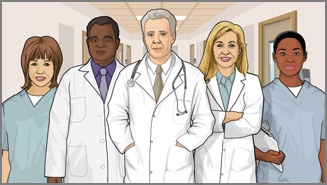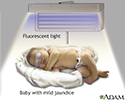Long-term alcohol abuse can lead to dangerous damage called alcoholic liver disease. Let's talk today about alcoholic liver disease.
Alcoholic liver disease usually occurs after years of drinking too much. The longer you've abused alcohol, and the more alcohol you've consumed, the greater likelihood you will develop liver disease.
Alcohol may cause swelling and inflammation in your liver, or something called hepatitis. Over time, this can lead to scarring and cirrhosis of the liver, which is the final phase of alcoholic liver disease. The damage caused by cirrhosis is unfortunately irreversible.
To determine if you have alcoholic liver disease your doctor will probably test your blood, take a biopsy of the liver, and do a liver function test. You should also have other tests to rule out other diseases that could be causing your symptoms.
Your symptoms may vary depending upon the severity of your disease. Usually, symptoms are worse after a recent period of heavy drinking. In fact, you may not even have symptoms until the disease is pretty advanced.
Generally, symptoms of alcoholic liver disease include abdominal pain and tenderness, dry mouth and increased thirst, fatigue, jaundice (which is yellowing of the skin), loss of appetite, and nausea. Your skin may look abnormally dark or light. Your feet or hands may look red. You may notice small, red, spider-like blood vessels on your skin.
You may have abnormal bleeding. Your stools might be dark, bloody, black, or tarry. You may have frequent nosebleeds or bleeding gums. You may vomit blood or material that looks like coffee grounds.
Alcoholic liver disease also can affect your brain and nervous system. Symptoms include agitation, changing mood, confusion, and pain, numbness, or a tingling sensation in your arms or legs.
The most important part of treatment is to stop drinking alcohol completely. If you don't have liver cirrhosis yet, your liver can actually heal itself, that is, if you stop drinking alcohol. You may need an alcohol rehabilitation program or counseling to break free from alcohol. Vitamins, especially B-complex vitamins and folic acid, can help reverse malnutrition.
If cirrhosis develops, you will need to manage the problems it can cause. It may even lead to needing a liver transplant.
 All rights reserved.
All rights reserved.















































































































































































































































































































































































































